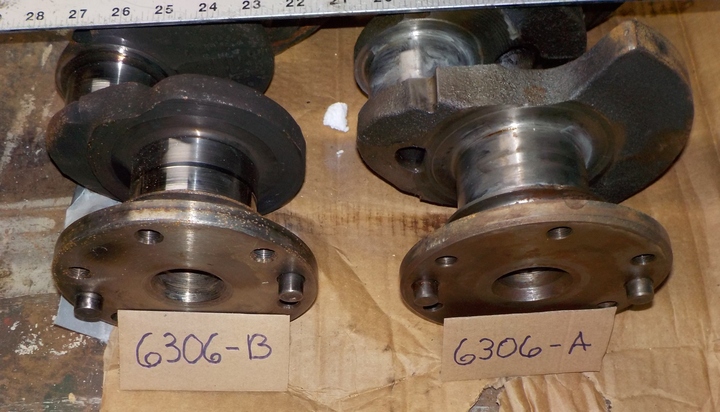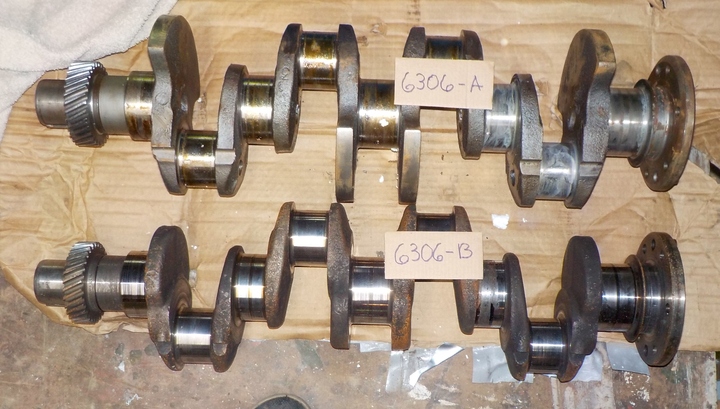I am restoring a 1956 FMD. Unfortunately, the crankshaft for it, shown on the left is worn beyond repair. It is numbered 6306-B. I got another crankshaft from a 1954 FMD, shown on the right, which is numbered 6306-A. The journals and throw as well as the overall size of both cranks look identical. The counter weights for the rod journals on the 6306-A crank are noticeably longer and heavier than the old crank. Also, the journals are cored out hollow. This is not the case with the old crank.
I am wondering if the new crank will function properly given the difference in counterweights. According to one source, the 1954 & 56 FMD’S both had the Mark I engine. This seems to indicate that the cranks should interchange. Can anyone shed some light on this matter?
Many Thanks!


I am wondering if the new crank will function properly given the difference in counterweights. According to one source, the 1954 & 56 FMD’S both had the Mark I engine. This seems to indicate that the cranks should interchange. Can anyone shed some light on this matter?
Many Thanks!



